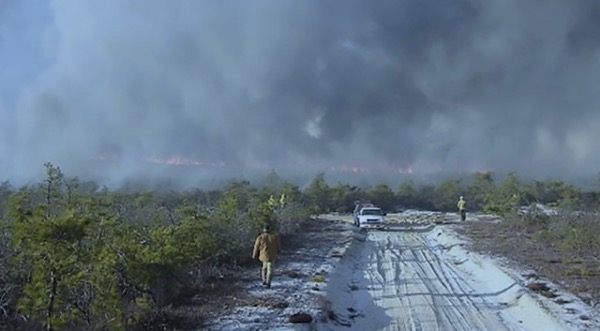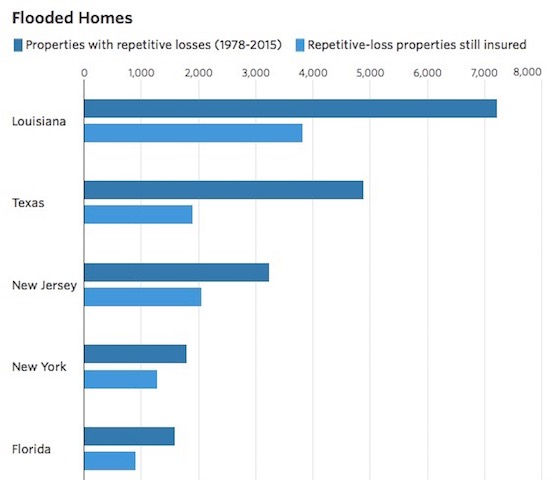Consistent Pattern of Bias And Providing A Platform For Energy Industry Talking Points
Major Relevant Concerns Ignored
Reality is the OPPOSITE of What Is Reported
“drastic reductions in greenhouse gas emissions now look remarkably easy to achieve, from an economic point of view.” Paul Krugman, Nobel Prize winner in economics (1/3/20)
After the extensive media coverage of the Exxon climate fraud lawsuit, it is now well understood that the fossil energy industry waged a propaganda war to manufacture doubt, deny, and undermine the credibility of climate science and that they used the media to deploy that propaganda.
So, based on this history, one would assume that the media and professional journalists would be cognizant of their role in deceiving the American public and be highly skeptical of energy industry climate and energy claims. One would assume that they would resent being used as a tool to lie to their readers and manipulate public opinion.
One also would assume that the media would feel some sense of shame and take responsibility for their role in this deception and try to correct the historical wrongs that they participated in and make things right.
One would think that they would reject and correct the current framing and narrative, which is upside down and exactly backwards.
But these assumptions are the ramblings of a naive fool.
I’ll use just the recent nuclear industry talking points Op-Ed by Carol Browner – which lacked adequate disclosure of Browner’s industry funded front group, Nuclear Matters – and quick excerpts from today’s NJ Spotlight story on electric vehicles to illustrate my conclusion that NJ Spotlight’s climate and energy coverage remains hopelessly mired in falsehoods, ideology, and consistently reflects fossil fuel bias, both in the content of the coverage and the facts that are ignored.
First, let’s slog through some theory to point out relevant economic theory and consensus facts that are rarely – if ever – reported (interested readers can hit the links for further details):
1. Fossil fuels, the fossil (and nuclear) energy industry, and the internal combustion engine receive BILLIONS of dollars in taxpayer subsidies.
The subsidies are so huge that even capitalist tool Forbes reports on that, see:
Spotlight coverage is obsessed with so called subsidies to renewables, when the opposite is true. It is fossil that gets all the subsidies and they go unreported.
2. Fossil fuels, the fossil energy industry, and the internal combustion engine “externalize” huge costs of their operations, costs which fall under the concept of “the social cost of carbon”.
Spotlight coverage is obsessed with the so called imposition of costs on ratepayers by renewables, when the opposite is true. Fossil imposes huge and unreported costs on us all.
3. Economic theory elucidates a concept that is known as “market failure”.
For our purposes, prime examples of “market failure” include “externalities” and “public goods“.
Fossil energy markets are rife with structural “market failure”. Countless studies describe and quantify such market failure (do the Google).
But Spotlight is obsessed with reporting on so called “cheap” gas and never mentions the reality of market failure in their coverage. Again, the reality is the opposite of what is reported.
Additionally, economic concepts seek to examine the equitable dimensions of markets, in terms of the distribution of costs and benefits.
One key measure of distributional equity is known as the “Gini co-efficient”.
One key indictor and a remedy to inequitable distribution of economic resources and inequitable concentration of benefits is known as the Hicks-Kaldor criterion, which basically says that economic winners have a moral obligation and mechanism to compensate economic losers.
Another key concept in economic policy is what as known as “inter-generational equity”. In this regard, a key assumption in the economic calculus to public policy and planning for the future that incorporates inter-generational equity is known as “social discount rate”.
These fundamental economic concepts never get incorporated in Spotlight coverage – which omissions mislead readers.
4. Other states, including New York and California, have taken more aggressive steps than NJ to address market failure via regulatory mandates and surcharges to incorporate the external cost of carbon.
NY’s proposal is pending, but California recently adopted:
The GHG adder used in the TRC, RIM, and PAC tests is a modeled price meant to achieve an aggressive GHG reduction target. The new values start at $73.24/metric ton of CO2 in 2019, escalating to $150/metric ton of CO2 in 2030.
Compare California’s program with RGGI. RGGI only covers 15% of total GHG emissions and the allowance price is in the paltry range of $5/ton.
But readers of NJ Spotlight virtually never are told about any of these theories or facts.
But, NJ Spotlight has provided a platform and published numerous stories (too numerous to mention here) that not only ignore all the above, but flat out contradict it with industry lies.
Without addressing the recent pro-nuclear Op-Ed by Carol Browner (more on that in a future post), today’s NJ Spotlight story on electric vehicle provides glaring examples:
A. What does “competitive” mean?
NJ Spotlight focuses on “competitive” aspects.
“This isn’t going to do anything to help the competitiveness of New Jersey businesses,’’ said Dennis Hart, executive director of the Chemistry Industry Council of New Jersey, referring to the high costs manufacturers already face because of steep energy bills. He urged state revenue be used instead of relying on ratepayers to fund the program.
First of all, there is a dangerous hidden premise: the Legislature has no obligation to “help” NJ businesses.
But, with respect to alleged “steep energy bills”, as we highlight above, energy bills are rife with externalities and do not reflect the social cost of carbon or the equitable aspects of climate chaos or energy market prices, costs and benefits.
NJ Spotlight then reports this as a fact, not an ideological claim:
The rebates under the proposed bill will finally make electric vehicles competitive with conventional internal-combustion engines.
The internal combustion engine benefits from HUGE subsidies, externalizes its costs, and exacerbates an already grossly inequitable distribution of economic resources and costs (economic, social, environmental and public health costs).
Accordingly, if these costs were included in the price of gasoline and incorporated in the purchase price of the internal combustion engine vehicle, electric vehicles would be economically superior.
Spotlight’s failure to report facts on fossil subsidies and market failure leads readers to exactly the opposite and wrong conclusion.
B. The role of regulation is to remedy market failure
As noted above, NJ Spotlight fails to mention market failure or the policies of other States to remedy various market failures.
But they have no problem reporting assumptions that markets are superior to regulation. Check this out:
Advocates view the legislation as crucial to reducing greenhouse-gas emissions from the transportation sector, the single largest source of pollution contributing to climate change. It also aims to comply with California’s clean-car program, which seeks to convince motorists to switch to electric cars, or zero-emission vehicles.
Not only is that an ideological claim about the superiority of markets (i.e. the program is about “convincing consumers”), but it is factually false.
The California clean car ZEV program is a regulatory program that targets the automobile industry: (not the education of consumers)
In 2012, CARB adopted a set of regulations to control emissions from passenger vehicles, collectively called Advanced Clean Cars. Advanced Clean Cars, developed in coordination with the United States (U.S.) Environmental Protection Agency (EPA) and National Highway Traffic Safety Administration (NHTSA), combined the control of smog-causing (criteria) pollutants and greenhouse gas (GHG) emissions into a single coordinated package of regulations: the Low-Emission Vehicle III regulation for criteria (LEV III Criteria) and GHG (LEV III GHG) emissions, and a technology forcing mandate for zero-emission vehicles (ZEV).
Regulatory mandates are not being enforced. But Spotlight readers don’t know that.
Worse, Spotlight instead provided a platform for the auto industry – which is not in compliance with regulatory mandates – to criticize the state:
To some, however, New Jersey has fallen behind other states, especially those that followed the Garden State in trying to implement the California clean-car program.
“New Jersey has literally done nothing to advance the goals of this program,’’ said Jim Appleton, president of the New Jersey Coalition of Automotive Retailers.
Chutzpah, no?
C. Costs for Whom? What about equity?
NJ Spotlight regularly reports aggressively about the so called called high costs of renewable energy and economic impacts on ratepayers, while ignoring ALL of the above economic theory and facts that would pout those alleged high costs in context.
Today, they correctly reported the amount of funding for the EV rebate program, but not the implications of it is where coming from:
The bill proposes to siphon off $30 million a year from a ratepayer-funded program over the next decade to provide rebates to consumers to buy the more expensive electric vehicles.
The bill would “siphon” that money away from low income energy assistance programs that benefit low income people who are desperately trying to keep the lights on and stay warm in the winter and transfer it to rebates to wealthy people buying new cars.
That is a moral outrage.
Spotlight then reports a correction to prior reporting – without noting that it is a correction – by carefully noting that the bill does NOT provide new money or increase ratepayer surcharges, but, as we previously correctly pointed out, merely authorized BPU to increase those surcharges in the future:
It also opens the way for the state to raise additional funds to finance expansion of the charging infrastructure to reduce range anxiety of motorists, who fear they’ll be left stranded with no place to recharge their vehicles.
This completely undermines Spotlight’s prior and consistent reporting about so called rate increases to pay for the program and exposes industry opposition as based on exaggerations (which Spotlight continues to print, despite the fact that they know these claims are false).
And, of course, Spotlight closes the story with the (unqualified) perspective of climate criminal Jim Benton of the NJ Petroleum Council.
All this amounts – at best – to serious bias.
More on the fact free Browner nuclear Op-Ed in a future post.

